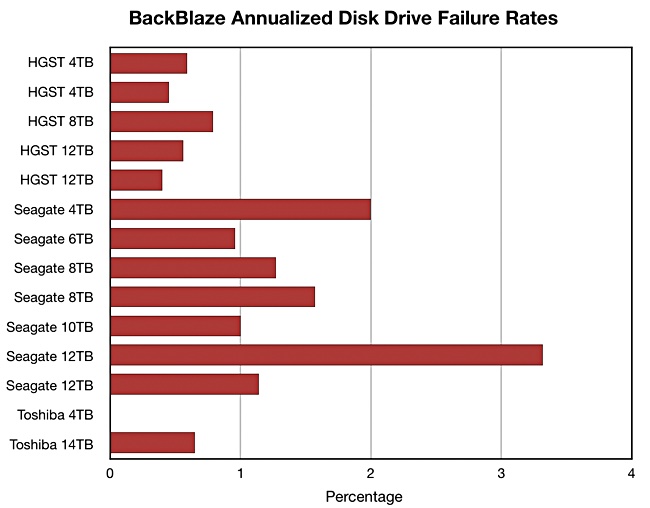


If that were the case, you'd see the lower-capacity drives begin to fail at a higher rate than higher-capacity drives since a drive with more NAND has a higher write tolerance. Klein speculates that the SSDs "could hit the wall" and begin failing at higher rates as their NAND flash chips wear out. But it's still interesting to see that case made with data from thousands of drives over a few years of use. All else being equal, you'd expect a drive with a bunch of moving parts to have more points of failure than one with no moving parts. This data-both the reliability gap between them and the fact that HDDs start to sputter out sooner than SSDs-makes intuitive sense. Backblaze's SSDs, on the other hand, continued to fail at roughly the same 1 percent rate as they did the year before. But once you hit year five, HDD failure rates begin going upward quickly-jumping from a 1.83 percent failure rate in year four to 3.55 percent in year five. Over their first four years of service, SSDs fail at a lower rate than HDDs overall, but the curve looks basically the same-few failures in year one, a jump in year two, a small decline in year three, and another increase in year four. This makes the data less useful for comparing relative reliability between companies, but it can still be useful for comparing the overall reliability of hard drives to the reliability of SSDs doing the same work. The sample size for this SSD data is much smaller, both in the number and variety of drives tested-they're mostly 2.5-inch drives from Crucial, Seagate, and Dell, with little representation of Western Digital/SanDisk and no data from Samsung drives at all.

The reports are comprehensive enough that we can draw at least some conclusions about which companies make the most (and least) reliable drives. Based on data collected since the company began using SSDs as boot drives in late 2018, Backblaze cloud storage evangelist Andy Klein published a report yesterday showing that the company's SSDs are failing at a much lower rate than its HDDs as the drives age.īackblaze has published drive failure statistics (and related commentary) for years now the hard drive-focused reports observe the behavior of tens of thousands of data storage and boot drives across most major manufacturers. Backup and cloud storage company Backblaze has published data comparing the long-term reliability of solid-state storage drives and traditional spinning hard drives in its data center.


 0 kommentar(er)
0 kommentar(er)
